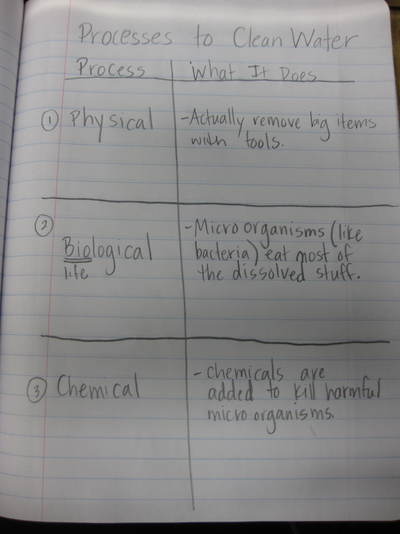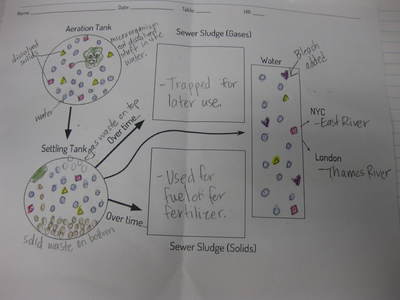So we realized that some of our ingredients we put into our water are dissolved. And we've pretty much figured out that they're so small our physical means of getting them out do not work.
So we wondered...is this what really happens at a wastewater treatment facility? Are they unable to get all the dissolved stuff out, too?
So we went back to the drawing board and figured out our next best steps would be to go to the wastewater treatment facility nearest us. But Mrs. Brinza found out we have to be at least 12 to go on a field trip there (and most students are only 10 or 11). She's contacted a guest speaker to come in, but that takes some time to arrange. We did watch some videos earlier, so we'll go back to those since that's like a virtual field trip.
Here's the two videos we watched:
So we wondered...is this what really happens at a wastewater treatment facility? Are they unable to get all the dissolved stuff out, too?
So we went back to the drawing board and figured out our next best steps would be to go to the wastewater treatment facility nearest us. But Mrs. Brinza found out we have to be at least 12 to go on a field trip there (and most students are only 10 or 11). She's contacted a guest speaker to come in, but that takes some time to arrange. We did watch some videos earlier, so we'll go back to those since that's like a virtual field trip.
Here's the two videos we watched:
| | |
We figured out a lot of answers to the questions we asked. Here's a quick summary of what we figured out:
1. There's three ways they clean the water--physically, biologically, and chemically.
2. The wastewater treatment plant removes 85-95% of the dissolved stuff.
3. The remaining part, along with the cleaner water is known as treated water. Chemicals are added to further clean it (and kill any harmful bacteria).
4. The treated water then enters the two cities' (New York and London) closest rivers.
We organized our findings into two graphic organizers, a data table on the left and a concept map on the right (see below)
1. There's three ways they clean the water--physically, biologically, and chemically.
2. The wastewater treatment plant removes 85-95% of the dissolved stuff.
3. The remaining part, along with the cleaner water is known as treated water. Chemicals are added to further clean it (and kill any harmful bacteria).
4. The treated water then enters the two cities' (New York and London) closest rivers.
We organized our findings into two graphic organizers, a data table on the left and a concept map on the right (see below)


 RSS Feed
RSS Feed